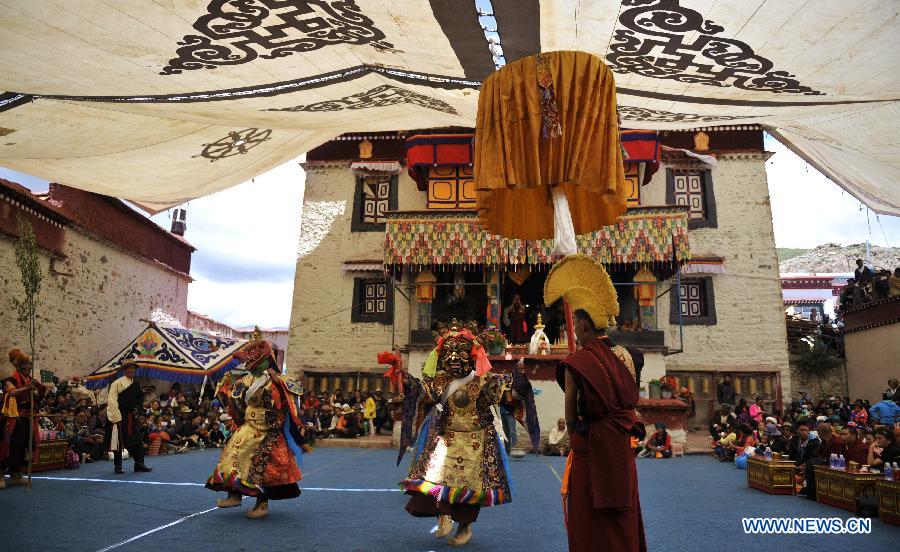
Tibetan Buddhist monks perform cham dance during a ritual at Pakmo Monastery in Dagze County, southwest China's Tibet Autonomous Region, July 20, 2015. The dance, called "cham" in Tibetan language, is believed to ward off disaster and ghost and bring luck and happiness. The dancers wear masks of various animals and mythical figures as they perform to the accompaniment of religious music. (Xinhua/Jigme Dorje)
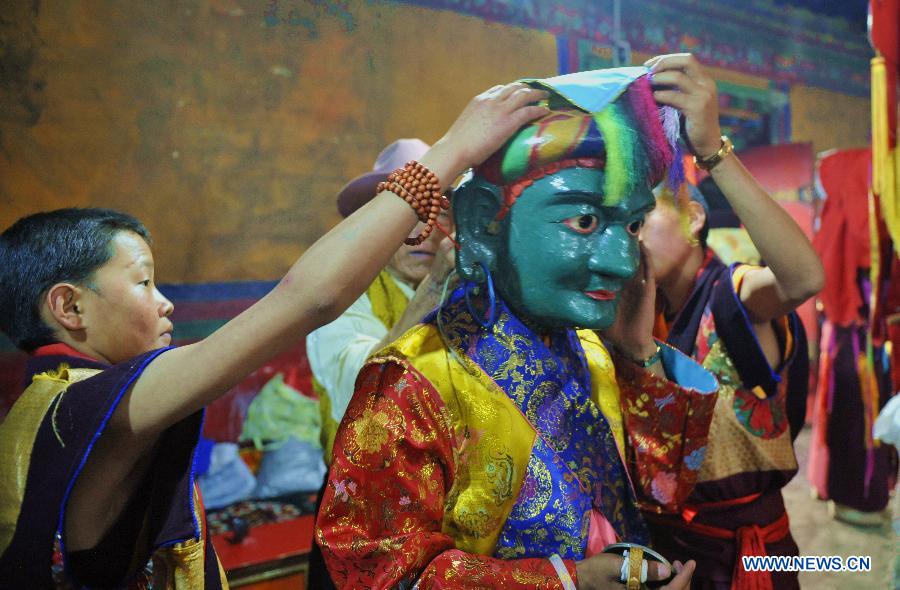
Tibetan Buddhist monks prepare to perform cham dance during a ritual at Pakmo Monastery in Dagze County, southwest China's Tibet Autonomous Region, July 20, 2015. The dance, called "cham" in Tibetan language, is believed to ward off disaster and ghost and bring luck and happiness. The dancers wear masks of various animals and mythical figures as they perform to the accompaniment of religious music. (Xinhua/Jigme Dorje)
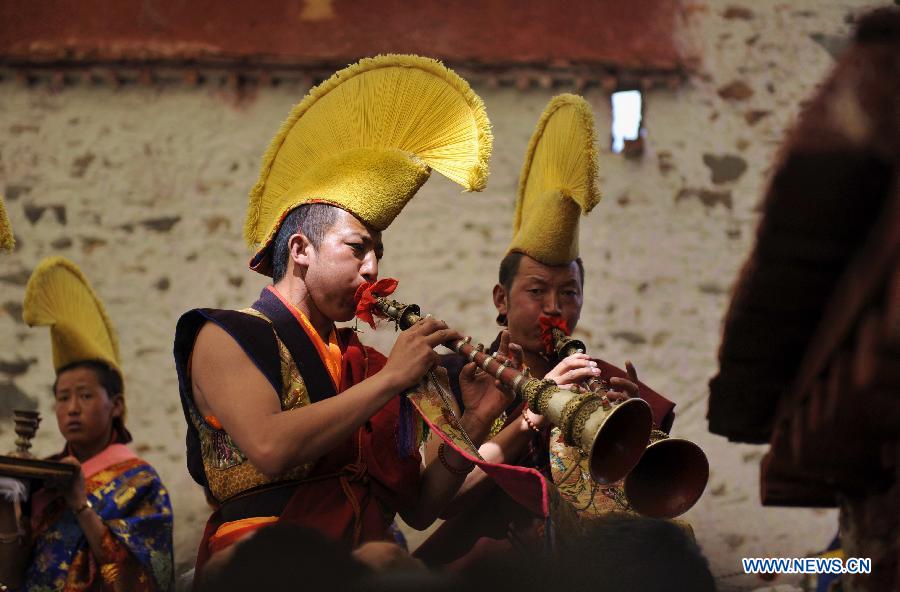
Tibetan Buddhist monks accompany for cham dance during a ritual at Pakmo Monastery in Dagze County, southwest China's Tibet Autonomous Region, July 20, 2015. The dance, called "cham" in Tibetan language, is believed to ward off disaster and ghost and bring luck and happiness. The dancers wear masks of various animals and mythical figures as they perform to the accompaniment of religious music. (Xinhua/Jigme Dorje)
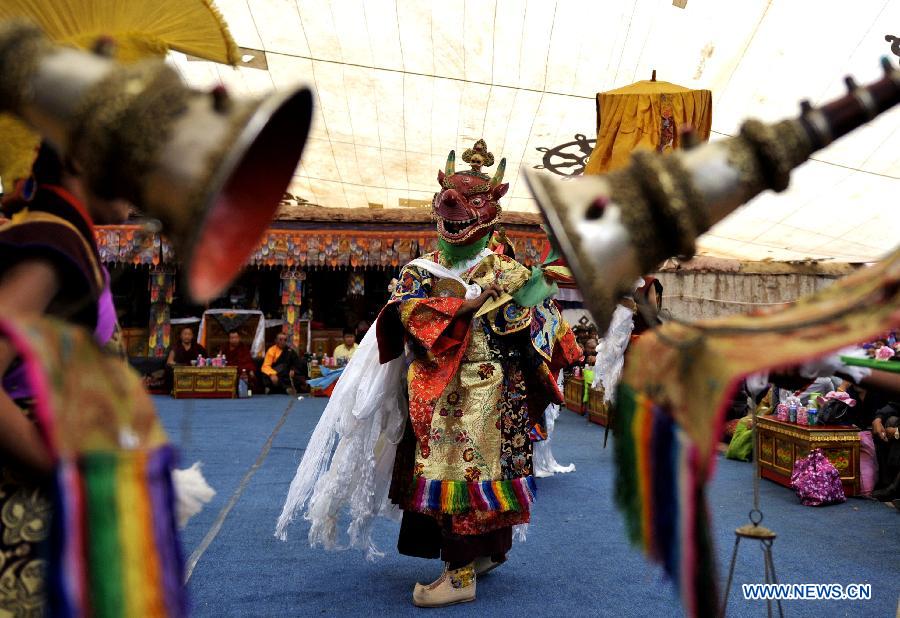
Tibetan Buddhist monks perform cham dance during a ritual at Pakmo Monastery in Dagze County, southwest China's Tibet Autonomous Region, July 20, 2015. The dance, called "cham" in Tibetan language, is believed to ward off disaster and ghost and bring luck and happiness. The dancers wear masks of various animals and mythical figures as they perform to the accompaniment of religious music. (Xinhua/Jigme Dorje)
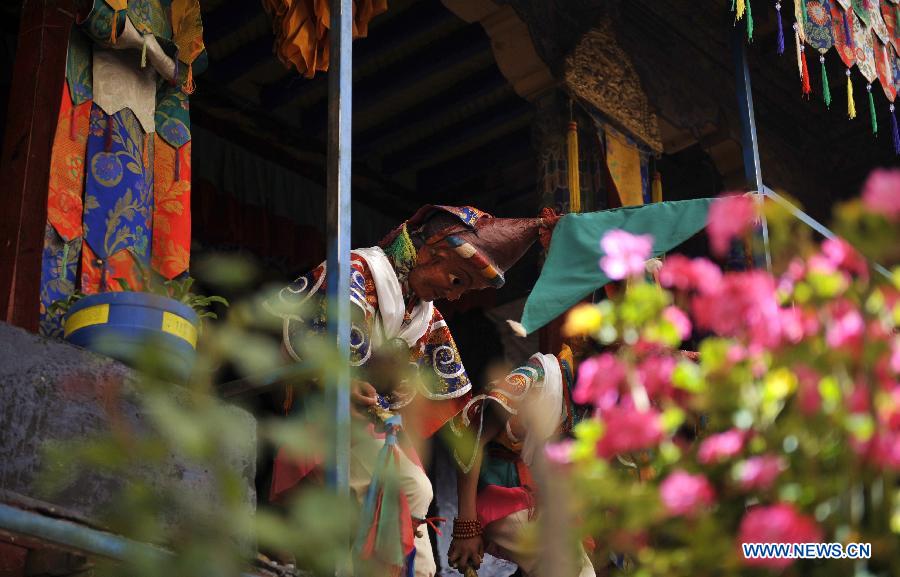
Tibetan Buddhist monks perform cham dance during a ritual at Pakmo Monastery in Dagze County, southwest China's Tibet Autonomous Region, July 20, 2015. The dance, called "cham" in Tibetan language, is believed to ward off disaster and ghost and bring luck and happiness. The dancers wear masks of various animals and mythical figures as they perform to the accompaniment of religious music. (Xinhua/Jigme Dorje)
